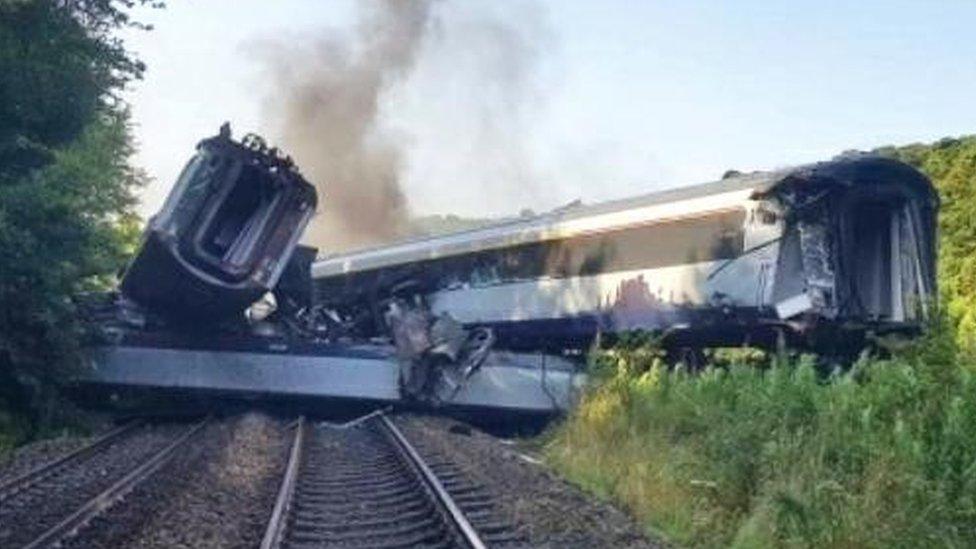Stonehaven crash: Concern at rail safety efforts raised by regulator
- Published
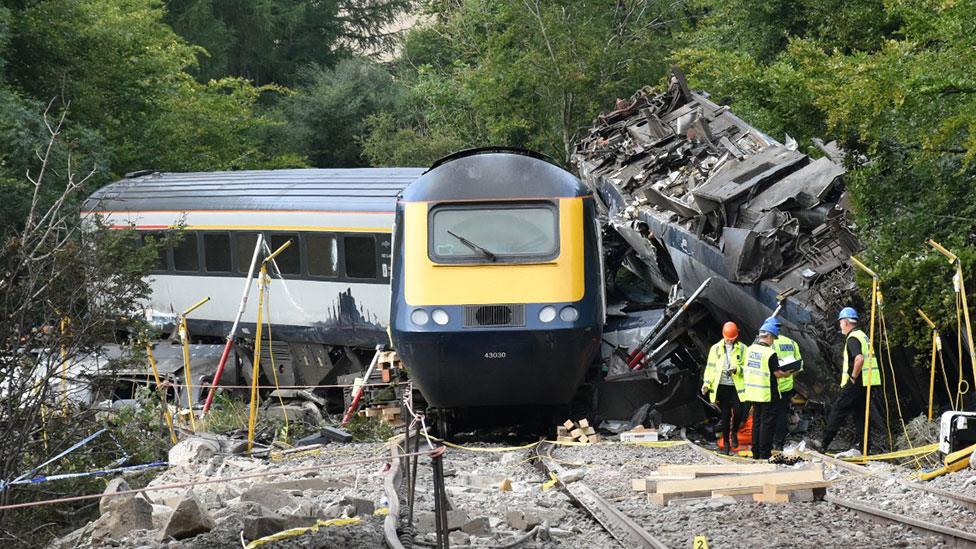
Three men died in the derailment in 2020
Concerns about safety steps in the wake of the Aberdeenshire train crash which claimed three lives have been raised by the industry regulator.
The train hit a landslide near Stonehaven in 2020 after heavy rain.
A drainage system had been incorrectly installed.
The Office of Rail and Road (ORR) said Network Rail Scotland had failed to provide tangible supporting evidence, external to demonstrate steps taken so far to implement safety recommendations.
Network Rail Scotland said it was "committed to learning the lessons" of the crash.
Train drivers' union Aslef called for a public inquiry into the crash.
Driver Brett McCullough, 45, conductor Donald Dinnie, 58, and passenger Christopher Stuchbury, 62, died when the train derailed at Carmont on 12 August 2020.
Six other people were injured when the 06:38 Aberdeen to Glasgow service hit washed-out debris at Carmont, south of Stonehaven.
The train was returning to Aberdeen due to the railway being blocked further down the line.
The ORR said prioritised action plans had been made to meet safety recommendations, but warned focus was needed on delivering them.
The annual report also warned that a backlog in drainage inspections caused by extreme weather this year could potentially pose an increased safety risk.

The train hit debris in heavy rain
The report said: "During our engagement, representatives from the region described the steps they have taken in response to their action plans but have subsequently failed to provide any tangible supporting evidence to demonstrate these.
"Network Rail Scotland also did not clearly articulate how each action plan will implement the relevant task force recommendations."
It added: "The region improved identification of its drainage assets, but our planned inspections relating to this were delayed by named storms in early 2022.
"Improved information about drainage assets is vital for Network Rail to ensure that its resources are correctly targeted to maintain existing assets and invested in meeting the challenges presented by climate change. We will report on these matters in due course, once our inspections work has been completed."
Network Rail Scotland said delivering a safe and reliable railway more efficiently had never been more important.

Donald Dinnie, Christopher Stuchbury and Brett McCullough died
"We are committed to learning the lessons of Carmont made by the Rail Accident Investigation Branch (RAIB), as well as implementing the Mair report," a statement said.
"Since the accident, we have made significant changes to how we operate services during extreme weather and have increased our investment in new technologies.
"Our control room is also the first in Britain to establish a specialist weather team, and this additional resource is being supported by increased investment in our frontline teams."
The RAIB made 20 safety recommendations in a report, external in March on the crash, which followed the task force report by Lord Mair the previous year.
They included better management of civil engineering projects, improved response to extreme rainfall, and better understanding of the additional risk associated with older trains.
A drainage system was installed in 2011 and 2012 by now-collapsed contractor Carillion - but it was not in accordance with the design.
Had it been constructed correctly, it was "highly likely to have safely accommodated the flow of surface water" on the day of the crash, the RAIB report concluded.
Kevin Lindsay, of Aslef, said they would work with the industry to make railways as safe as possible.
"Because the reality is that this report suggests that we are still to see the full-scale action required after the Carmont crash," he added.
"Aslef remains committed to securing a full public inquiry into all aspects of the Carmont crash. We must ensure that everything possible is done to stop future tragedies from taking place."
- Published10 March 2022
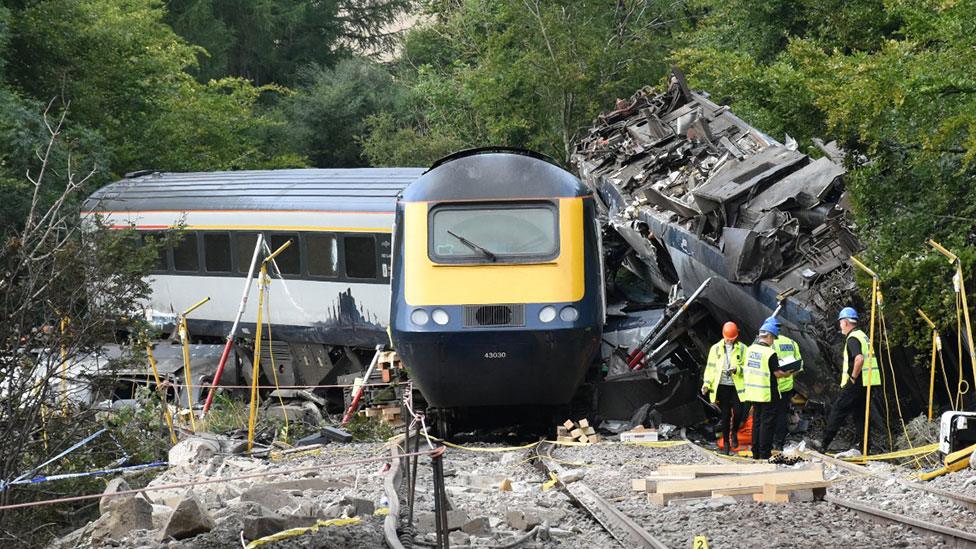
- Published8 November 2021
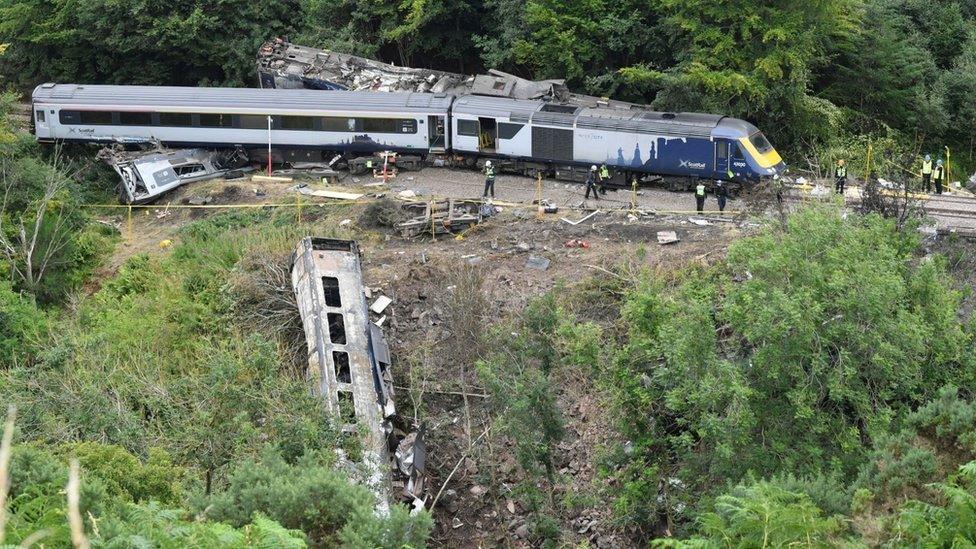
- Published12 August 2021
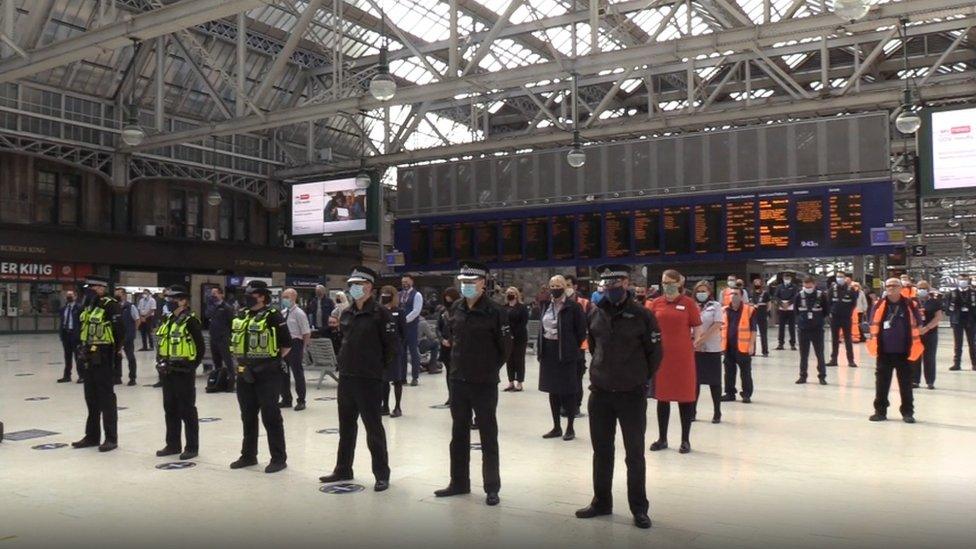
- Published19 April 2021

- Published17 March 2021

- Published22 August 2020

- Published12 August 2020
